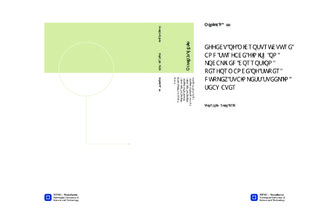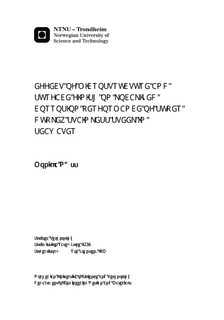| dc.contributor.advisor | Johnsen, Roy | nb_NO |
| dc.contributor.author | Næss, Monika | nb_NO |
| dc.date.accessioned | 2014-12-19T12:21:19Z | |
| dc.date.available | 2014-12-19T12:21:19Z | |
| dc.date.created | 2014-08-22 | nb_NO |
| dc.date.issued | 2014 | nb_NO |
| dc.identifier | 740202 | nb_NO |
| dc.identifier | ntnudaim:11907 | nb_NO |
| dc.identifier.uri | http://hdl.handle.net/11250/240983 | |
| dc.description.abstract | Corrosion resistant alloys (CRAs) used in subsea pressure-retaining components must be compatible with production fluids and resistant to pitting and crevice corrosion in seawater. Whereas materials selection in production environments is governed by well-established international standards such as ISO 15156, much debate still exists as of how to determine the seawater localized corrosion resistance of higher grade CRAs such as duplex super duplex stainless steels (DSS and SDSS, respectively). While most industry specifications rely on the ASTM G48 standard to determine localized corrosion resistance, for duplex and super-duplex stainless steels there is no consensus on surface finish prior testing (e.g. polishing or pickling) and test temperature (e.g. 50 °C in NORSOK 630 versus 40 °C in ASTM A923). Moreover, it is unclear whether existing procedures are sensitive enough to determine the onset of deleterious phases such as σ-phase and chromium nitrides. The objective of this investigation was to quantify the seawater pitting corrosion resistance of a type 25Cr SDSS (UNS S32750) and its correlation with microstructure and surface finish before testing. Cyclic potentiodynamic polarization (CPP) testing was used to determine the effect σ-phase on the corrosion response of the system. CPP results were then compared against industry standard practices based on the ASTM G48 Method A test. In addition, CPP tests were conducted at various temperatures, ranging from 25 to 90°C, to determine the effect of deleterious phases on critical pitting temperature (CPT) and overall localized corrosion resistance.The results from this project indicate that the Critical Pitting temperature for standard solution annealed Super Duplex Stainless Steel is 60-70°C. It is also shown that the corrosion resistance is reduced for material that contains sigma phase showing a Critical Pitting Temperature of 40-50°C. The surface treatments seem to have less effect on the values, but pickled surfaces gave a more repeatable result. | nb_NO |
| dc.language | eng | nb_NO |
| dc.publisher | Institutt for produktutvikling og materialer | nb_NO |
| dc.title | EFFECT OF MICROSTRUCTURE AND SURFACE FINISH ON LOCALIZED CORROSION PERFORMANCE OF SUPER DUPLEX STAINLESS STEEL IN SEAWATER | nb_NO |
| dc.type | Master thesis | nb_NO |
| dc.source.pagenumber | 120 | nb_NO |
| dc.contributor.department | Norges teknisk-naturvitenskapelige universitet, Fakultet for ingeniørvitenskap og teknologi, Institutt for produksjons- og kvalitetsteknikk | nb_NO |

